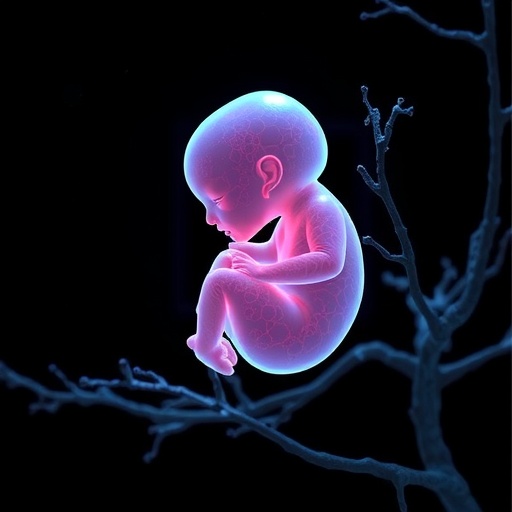Scientists are venturing into one of the most enigmatic frontiers of human biology: the earliest stages of human development. By leveraging advances in stem cell technology alongside artificial intelligence, researchers have begun to unravel the complex processes that govern how a single cell transforms into a multifaceted human embryo. This innovative approach, blending cutting-edge biology with computational power, promises to redefine our understanding of developmental biology.
At the heart of this pursuit are induced pluripotent stem cells, or IPSCs. These remarkable cells hold the capacity to develop into any of the thousands of cell types found in the human body. Unlike embryonic stem cells derived from early embryos, IPSCs are reprogrammed from adult cells, circumventing certain ethical concerns while retaining the vital plasticity necessary to model human development. Scientists have used IPSCs to generate three-dimensional structures called embryoid models that mimic aspects of early human embryos under laboratory conditions.
Creating these three-dimensional embryoid structures itself posed significant technical challenges. The models needed to recreate the spatial and temporal complexity of early embryos closely enough to capture the emergence of distinct cell types and tissue layers. Although successful generation of such models was a critical first step, understanding the dynamic sequence of developmental events that occur within these heterogeneous cell communities remained elusive. Traditional methods relying on snapshot analyses or averaging data across many samples often masked the intricate variability and nuanced transitions fundamental to development.
Addressing these challenges, researchers led by Jianping Fu, Ph.D., at the University of Michigan Medical School, have innovatively employed artificial intelligence to unlock the hidden dynamics of these human embryoid models. Dr. Fu and his team recognized that despite the impressive complexity of stem cell–derived models, their utility was hindered by their intrinsic heterogeneity—random fluctuations in cell types, shapes, and molecular profiles confound straightforward interpretation. This heterogeneity had long been a barrier to extracting meaningful developmental trajectories from static imaging data.
The team’s breakthrough came from integrating physics-informed neural networks, a specialized AI architecture inspired by recent advances in analyzing plant growth and disease progression. Initially proposed by Fu’s former graduate student Kejie Chen, Ph.D., this computational approach leverages known physical constraints to guide the learning process, enabling the model to infer continuous developmental processes from discrete imaging snapshots. This synergy of biological data and AI frameworks marks a profound methodological advancement in systems biology.
By applying this neural network to thousands of confocal fluorescent microscopy images—each capturing the spatial distribution of tissue structures and protein markers at defined time points—the AI reveals previously hidden features and developmental bifurcations. These bifurcations represent critical decision points wherein stem cells commit to divergent fates, giving rise to distinct cell types. Traditional imaging analyses often overlook such subtle transitions, but the AI’s capacity to integrate morphological and molecular signals concurrently facilitates a much deeper understanding of temporal developmental dynamics.
Crucially, this computational approach not only characterizes growth patterns and differentiation events more precisely but also quantifies protein expression changes with fine granularity. The team’s work showcases how AI-driven analysis can overcome human biases and the limited resolution of conventional assessments. Features such as transient signaling states or rare cell populations become discernible, expanding the granularity of developmental maps and opening new avenues for exploring embryogenesis.
The implications of these findings are far-reaching. Beyond fundamental biology, the AI tool sets a new precedent for high-throughput screening of embryoid cultures, which could accelerate drug discovery, toxicology testing, and regenerative medicine applications. Understanding the nuances of early development also lays the groundwork for unraveling the root causes of developmental disorders, miscarriages, and birth defects, where deviations from normal differentiation trajectories play a crucial role.
Looking toward the future, the integration of AI with bioengineered embryoid models paints an exciting picture. Such systems may enable the in silico generation of realistic embryoid images, providing a virtual testing ground to examine how genetic mutations, environmental factors, or pharmaceutical interventions influence development. These advances promise unbiased, predictive insights far beyond the capacity of traditional biological assays.
Dr. Fu emphasizes the transformative potential of combining data-intensive imaging techniques with AI frameworks, highlighting that this hybrid approach can yield a comprehensive exploration of human development through a lens that simultaneously captures complexity and coherence. This represents a vital leap forward in disentangling the layered orchestration of molecular and cellular events underpinning life’s earliest stages.
The study also democratizes embryoid research by providing analytical tools that can be adapted across laboratories and developmental systems, fostering a more integrative and computationally sophisticated life sciences community. As AI continues to permeate biological research, the marriage of stem cell modeling and machine learning emerges as a powerful blueprint for decoding the mysteries of human biology.
This remarkable fusion of stem cell biology and artificial intelligence not only illuminates the earliest chapters in human formation but also heralds a new era where computational precision meets biological complexity. The work done by Jianping Fu’s group epitomizes how interdisciplinary research can push the boundaries of knowledge, ultimately ushering in transformative biomedical breakthroughs.
Subject of Research: Human embryoid model development analyzed by artificial intelligence
Article Title: Deep manifold learning reveals hidden developmental dynamics of a human embryo model
News Publication Date: Not specified
Web References: DOI: 10.1126/sciadv.adr8901
References: Fu, J., Chen, K., Qin, K-R., Na, J., Gao, G., Yang, C., et al. (2024). Deep manifold learning reveals hidden developmental dynamics of a human embryo model. Science Advances.
Keywords: Developmental biology, Machine learning, Stem cells, Organ cultures




